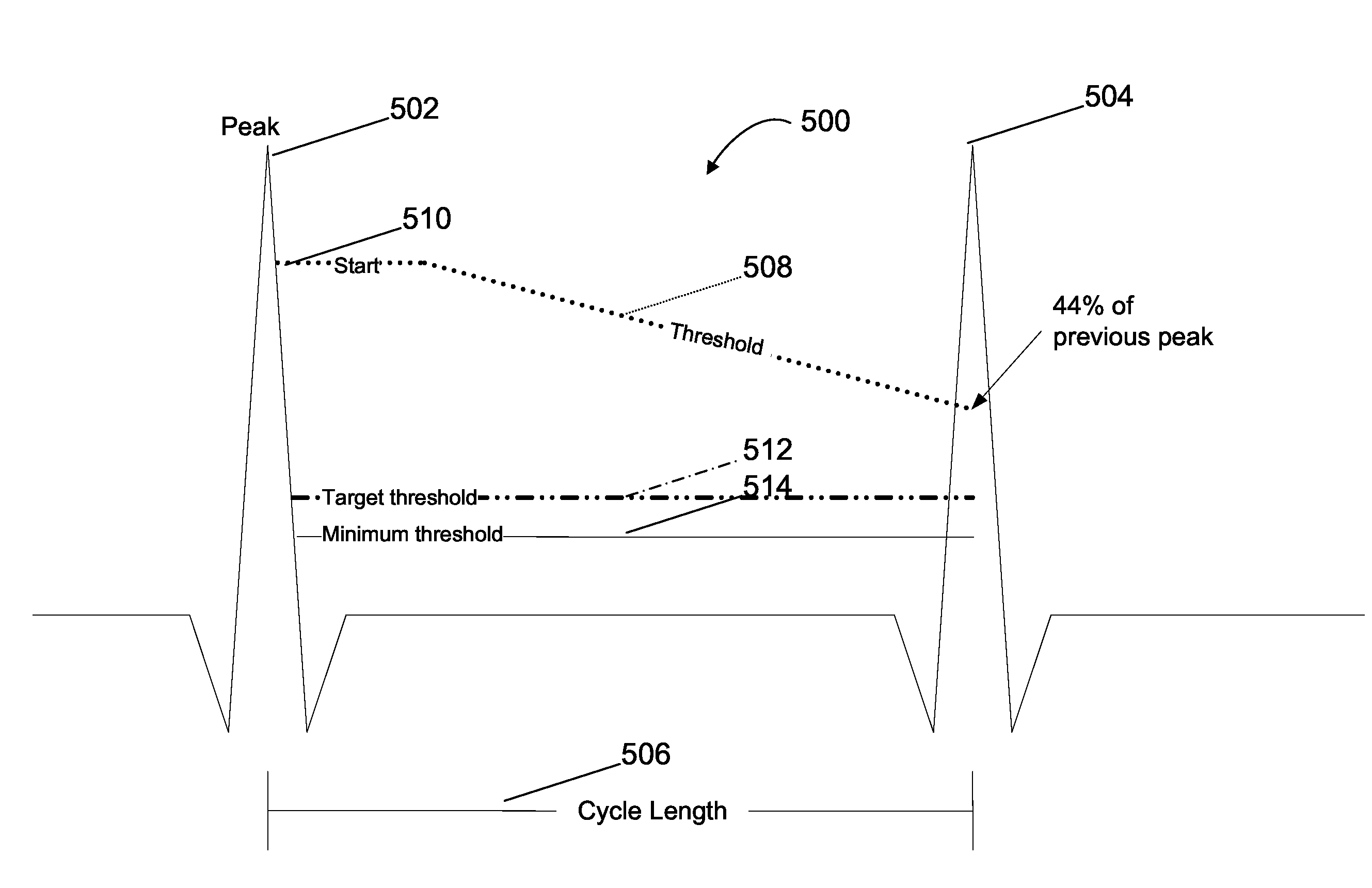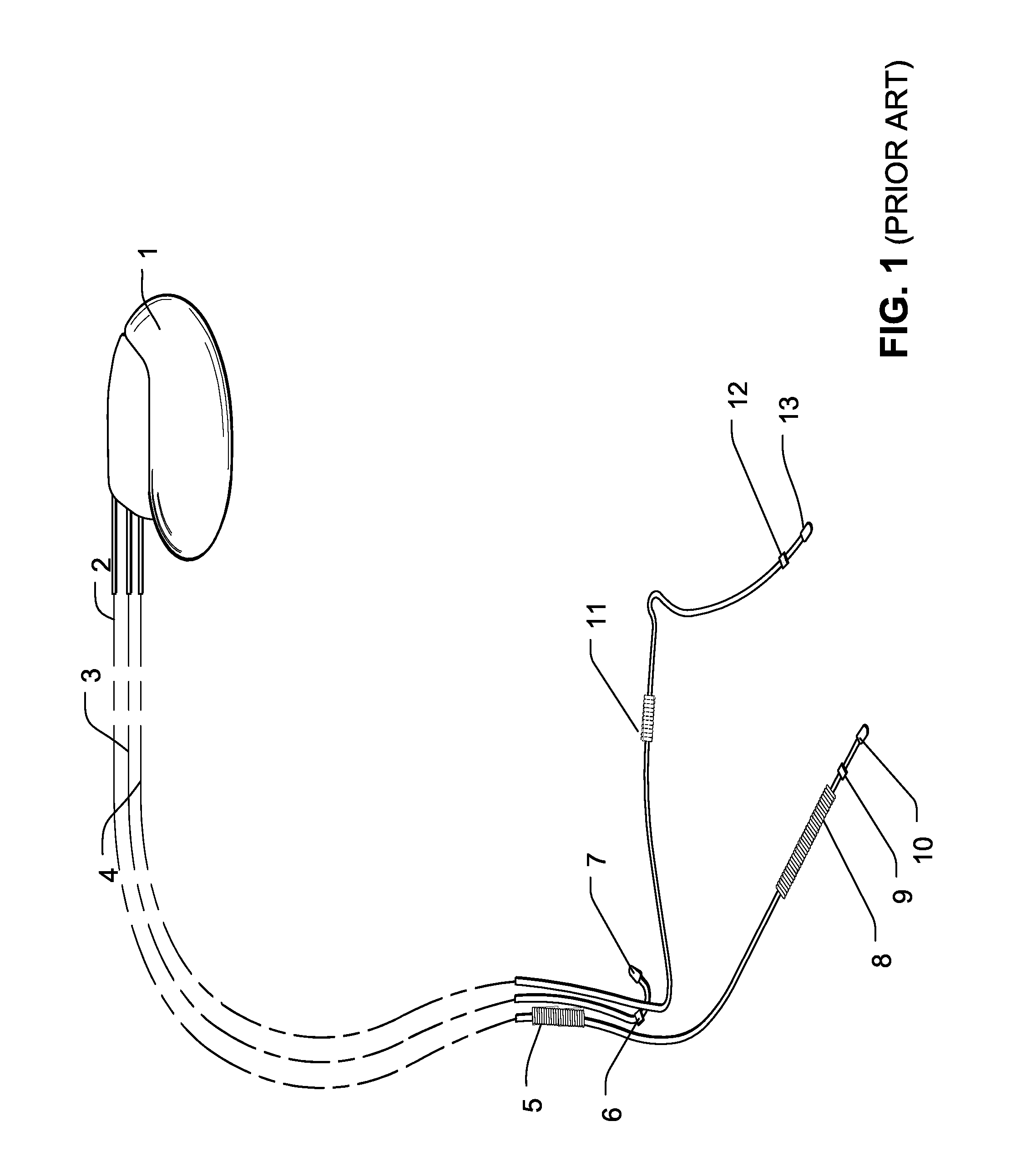Apparatus and method for detection of lead failure in an implantable medical device
a medical device and implantable technology, applied in the field of apparatus and method for detection of lead failure in implantable medical devices, can solve the problems of thinning insulation and potentially short-circuiting high-voltage components, most common modes of hardware failure, and detrimental consequences for cardiac patients, so as to save battery power
- Summary
- Abstract
- Description
- Claims
- Application Information
AI Technical Summary
Benefits of technology
Problems solved by technology
Method used
Image
Examples
Embodiment Construction
[0016]Versions of the invention will be readily understood from the following detailed description in conjunction with the accompanying drawings, wherein like reference numerals designate like structural elements. The accompanying drawings illustrate exemplary versions of the invention, and the invention is not limited to these drawings.
[0017]Detection of both lead failure and noise may be addressed by a preferred method that uses error detection on multiple sensing channels. Instead of using only one pair of sensing electrodes, at least three sensing electrodes, and thus at least three sensing vectors, may be used to detect noise in a cardiac signal. In order to accomplish this, the IMD hardware is preferably configured with an electronic switch circuit that can select at least three sensing channels for substantially simultaneous measurement of an intracardiac electrogram.
[0018]Referring to FIG. 2, input signals in the form of sensing vectors A, B, and C are shown arranged in a tr...
PUM
 Login to View More
Login to View More Abstract
Description
Claims
Application Information
 Login to View More
Login to View More - R&D
- Intellectual Property
- Life Sciences
- Materials
- Tech Scout
- Unparalleled Data Quality
- Higher Quality Content
- 60% Fewer Hallucinations
Browse by: Latest US Patents, China's latest patents, Technical Efficacy Thesaurus, Application Domain, Technology Topic, Popular Technical Reports.
© 2025 PatSnap. All rights reserved.Legal|Privacy policy|Modern Slavery Act Transparency Statement|Sitemap|About US| Contact US: help@patsnap.com



